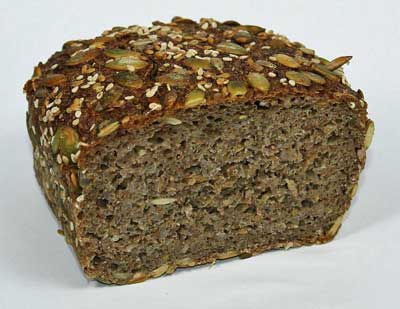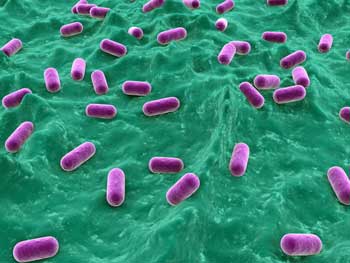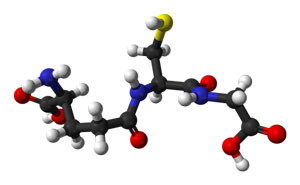(Ken’s gut series explaining how he recovered from ME/CFS continues with a focus on food and the gut. A reminder – Ken is a layman, not a doctor; check with your doctor before altering your diet or your treatment regime.)
This is the first in a series of posts of ways to address the stable but dysfunctional microbiome that I believe is the root cause of CFS and some other autoimmune illnesses.
Our gut flora or microbiome can be altered in four ways; through diet, herbs and spices, probiotics and antiobiotics. This first post will focus on diet. (See the diagram to the right with this posts topic highlighted in red).
Feeding the Good Bacteria
The main source for this information is, interestingly, agriculture research papers. (More research has been done on keeping animal guts healthy than humans.) For example, there is a study on the impact of GMO food on the health of pig guts from Australia that found: “GM-fed pigs had a higher rate of severe stomach inflammation with a rate of 32% of GM-fed pigs compared to 12% of non-GM-fed pigs (p=0.004). The severe stomach inflammation was worse in GM-fed males compared to non-GM fed males by a factor of 4.0 (p=0.041), and GM-fed females compared to non-GM fed females by a factor of 2.2 (p=0.034).
 The issue may be more complex than just GMO. GMO food is an attempt to “hyper-breed” better species. Better means having better characteristics that are commercially important – for example shelf life. Conventional breeding (selecting only plants with desirable traits) may have the same issue.
The issue may be more complex than just GMO. GMO food is an attempt to “hyper-breed” better species. Better means having better characteristics that are commercially important – for example shelf life. Conventional breeding (selecting only plants with desirable traits) may have the same issue.In the overweening rush to produce plants or animals that tolerate herbicides better, have a longer shelf life, produce higher yields, can tolerate transportation better, etc. blinkers are put on unintended side effects. ‘Heritage’ plants (non-genetically modified plants), for instance, may have low yields but produce more nutritious plants while modern higher yielding plants may carry secondary costs that are not seen until after a decade of use. (It may be more important to shop for ‘heritage’ or ‘heirloom’ species that to buy organically grown produce from more productive but less healthful stock.)
Prebiotics and Biotic Nutrients
Wikipedia defines Prebiotics as are “non-digestible food ingredients that stimulate the growth and/or activity of bacteria in the digestive system”.
I looked beyond this limited group of items and included digestible food ingredients that stimulate the growth of specific bacteria.
Encouraging E.coli
The few virulent strains of E. coli give it a bad name but most E. coli strains are benign and some some are very helpful. Two E. coli strains (Nissle 1917, also known as Mutaflor, Colinfant) are used to treat gastoenterological disorders).
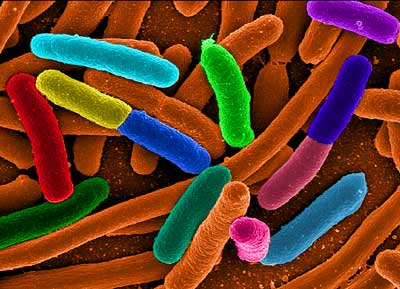
Some studies and indirect evidence suggest beneficial strains of E. coli may be low in ME/CFS but some food may help
Both direct and indirect evidence suggests E.colipopulation may be low in chronic fatigue syndrome.E.coli’s production of NADH, for instance, could be be why some people with ME/CFS benefit from NADH supplements.
D-Ribose – a precursor to tryptophan and histidine -was postulated to help ME/CFS/Fibromyalgia in 2004, and a later study found that 66% of ME/CFS/Fibromyalgia patients taking it improved. E.coli, interestingly enough, likes D-Ribose, especially if L-fuculose is present. Fructan, a fructose polymer, also encourages the growth of E coli. Are both these supplements helping E. coli rebalance the gut?
Some high fructan foods include:
- Agave 15–22%
- Artichoke, Globe 2.0–6.8%
- Artichoke, Jerusalem 16.0–20.0%
- Asparagus 1.4–4.1%
- Asparagus Root 10–15%
- Barley kernels (very young) 22%
- Cheese spread 4.5%
- Chicory Root 10–15%
- Chocolate 9.4%
- Garlic 15–20%
- Onion 1.1–10.1%
- Pasta 1–4%
- Rye (bran) 7%
- Rye (grain) 4.6–6.6%
- Wheat flour 1–4% (different wheat species impacts different bacteria – study)
- White bread 0.7–2.8%
Of special interest is Real Rye Bread (100% Rye). Rye bread encourages the growth of lactobacilli, bifidobacteria, and pediococci better than other FOS according to a 2011 study. Bifidobacterium(another bacteria that appears to be low in ME/CFS), releases more minerals from food according to a 2012 study. In terms of breads, sourdough bread result in up to 40% more mineral absorption then regular bread according to a 2003 study. “Wonder Bread” and similar white breads may be part of the problem.
I use the German (Non-GMO) manufactured rye bread (Mestemacher, Feldkamp) that are available in some deli’s and via Amazon.com.
Needless to say, for many weeks I was having 2-3 slices of German rye bread with goat cheese brie (very good price at Trader Joe’s). I still consume a loaf a week.
On the “kill E.Coli” list are:
- Quercetin
- Zinc
Neu5Gc Sugar
The Neu5Gc sugar comes from red meat (lamb, pork beef) and dairy products and encourages bacteroides (which CFS patients also appear to be low on). Bacteroides are involved in many important metabolic activities in the human colon including carbohydrate fermentation, metabolizing bile acids and other steroids and making use of nitrogenous substances. Food sources include:
- Food Ug/g
- Butter 1.2
- Salmon 1.47
- Cow Cheese 6.4
- Cow Milk 7.74
- Lamb 18.2
- Pork 25.5
- Beef 30.1
- Goat Cheese 39.9
Feeding the Most Important Bacteria
Lactobacillus Reuteri is near the top of my list of probiotics. The reason is simple; in almost all mammals L.reuteri is the species usually most often seen in healthy individuals. Often studies reported something like 55% of the Lactobacillus species are Reuteri. Most Lactobacillusspecies simply flow through the gut but do not ‘colonize’ it; ie they don’t stick around. Of all the Lactobacillus species, L. reuteri is the strain that is most likely to ‘stick around’ in the gut. L. reuteri is also the only Lactobacillus strain to produces reuterin and cobalamin (B12),
My own practice is to buy as many different strains of L. reuteri that I can find (unfortunately most are coupled with L. Acidopholus (which does not stick around) but this is the best that I can do). For maintenance, I do a week of L. reuteri every 2-3 months.
For a more technical description of L.reuteri, see
- http://microbewiki.kenyon.edu/index.php/Lactobacillus_reuteri
- http://www.plosone.org/article/info:doi/10.1371/journal.pone.0031951
Feeding L.Reuteri
Glutathione is one of L.Reuteri essential foods (http://www.ncbi.nlm.nih.gov/pubmed/21585317 ) so make sure that you supplement with it (I would suggest taking that 1 hr before the L.Reuteri) .
- [Effect of acupuncture on serum malonaldehyde content, superoxide dismutase and glutathione peroxidase activity in chronic fatigue syndrome rats].
- Increased ventricular lactate in chronic fatigue syndrome. III. Relationships to cortical glutathioneand clinical symptoms implicate oxidative stress in disorder pathophysiology.
- Lower whole blood glutathione peroxidase (GPX) activity in depression, but not in myalgic encephalomyelitis / chronic fatigue syndrome: another pathway that may be associated with coronary artery disease and neuroprogression in depression.
- Competition for glutathione precursors between the immune system and the skeletal muscle: pathogenesis of chronic fatigue syndrome.
The reason that some people may be non-responders to Gluthathione could be as simple as having no L.Reuteri left to feed!
Bottom line: L Reuteri and Glutathione should be taken together – taking one without the other may result in little or no effect. Whey may be an alternative to Glutathione – it’s documented to increase the production of Glutathione in the body, it is unclear if the Gluthathione is in a form usable by L.Reuteri in the gut.
- Gluthathione (and no, I don’t know which is better: no studies)
- L.Reuteri containing probiotics
Diet
Getting Cheesed Off Microbiome Shifts
One approach that I researched (and tried) was consuming cheese that have living active organisms. My logic was that bacteria that are normally friendly to a healthy gut (no downside risk), may also be disruptive to unhealthy gut bacteria (upside benefit).
Weston Price‘s use of fermented foods such as sauerkraut is a similar approach to modifying our gut bacteria. Our more homogenized and ‘sterilized’ diet has decreased our exposure to a variety of healthful microbial cultures used in cheese and fermented foods. My preference are raw milk produced cheeses that have more chance of capturing these “wild” species. Using commercial cultures to make your own cheese or fermented foods may have be less effective.
Low Budget Options
There are some options for those with a limited budget.
Goat Cheese
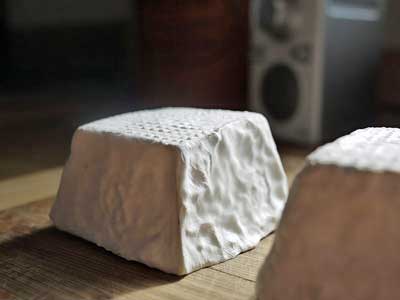
Goat cheese contains a substance Ken suggests may be helpful in producing better gut flora in ME/CFS
This type of cheese is rich in a sugar (Neu5gc) not found in most cheeses which feeds one of the bacteria that we are low in. Trader Joes has a Goat Milk Brie at a very reasonable in price.
Penicillin Roquefort
This is a member of the penicillin family, and while it does not produce conventional penicillin — it does produce many chemicals that could be very healthful. I found that Trader Joe’s blue cheese crumbs (very good price) produced a very minor herx in me — taken at bed time, I fell asleep very fast and slept long. It is found in Roquefort, Stilton, Danish blue, Cabrales.
Penicillin Candidum
Another member of the penicillin family that is used in Brie and Camembert cheeses. Trader Joes has an awesome Goat Brie at $2.79 for 4.4 oz. You get both the good sugar and penicillin candidum ! We still pick up 4-6 wheels of it a week for the family.
Diet Change
One of the contributing causes of my first remission was the removal of gluten from my diet. This was not an intentional change. To address weight gain that happened as a result of my first onset, my MD put me on a high protein – low carbohydrate diet. The side effect was very low starch and gluten. There are a few diet changes (besides those mentioned above) that have appear to have established benefit for CFS patients. These include:
- 85% Chocolate
- Licorice (pure stuff not the candy)
Both are known to change the microbiome according to PubMed studies.
Flavonoids
Aglycones or flavonoids can also alter the gut microbiome. (You can find a list of highflavonoid foods here.) At the moment, we don’t know which flavonoids impact which bacteria. We should note that sometimes more is not better with flavonoids, as well. “Excessive amounts of polyphenols reaching the colon may inhibit the growth of beneficial microbiota, which is responsible for bioconversion of polyphenols and enhancing the bioavailability of those compounds”, in other words, taking too much flavonoids may do far more harm to the gut than good.
Changing Your Gut Microbiome
My model suggests that a stable but dysfunctional micro-biome is probably present in ME/CFS, and this and other blogs will review ways I used to alter my gut microbiome and move it to a more functional state.

Could a radical change in our diet de-stabilize the gut flora enough to reset it? Check with your doctor before dramatically altering your diet.
Microbiome disruption begins with food. Your stable but dysfunctional micro-biome has, after all, become tuned to your current diet. If you made a radical change of your diet (and I mean radical!) I would expect your stable micro-biome to become more unstable for a while.
What change to make? I have no clear advice, but dropping all of your usual vegetables and replacing them with turnips and beets for 3 weeks may be a start. Add unusual spices. You may have to forget about eating a healthy balance diet for 3 weeks. Just fish for 3 weeks; salads (without dressing) for 3 weeks; beans for 3 weeks; you want to have nothing in common with your usual eating habits. You actually want to upset your digestive system!
(Check with your doctor before beginning any radical dietary changes….)
Summary
The above are not complete by any stretch of the imagination but this is the easiest approach to start correcting the dysfunctional microbiome that I have found. Will you see a dramatic effect or have a strong herx? Probably not, but some of your symptoms may alter or disappear over several weeks. But be warned, you may have farts that qualify as smells of mass destruction (of bad bacteria) or mild diarrhea. These are signs of thing changing — hopefully for the better.
Changing the Gut Flora Series
- Changing Your Gut Flora Pt I: Food to Feed the Good Bacteria in Chronic Fatigue Syndrome
- Changing Your Gut Flora II: Changing the Gut Ecosystem with Probiotics
- Changing Your Gut Flora III – Change Agents: Prescription and Herbal Antibiotics to Alter the Gut Flora in Chronic Fatigue Syndrome
Find more of Ken’s blogs here.


